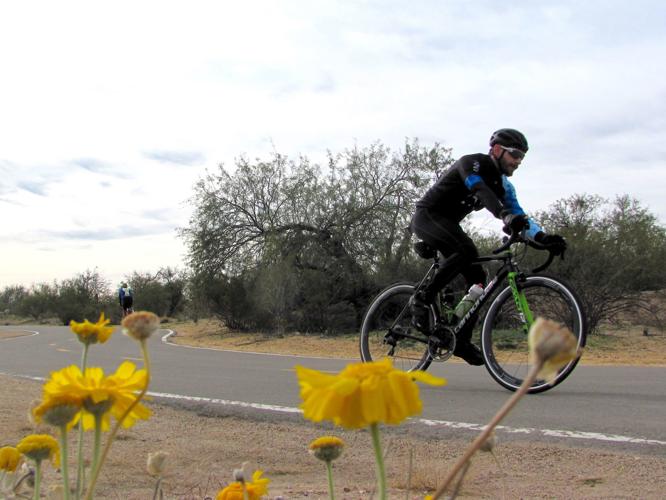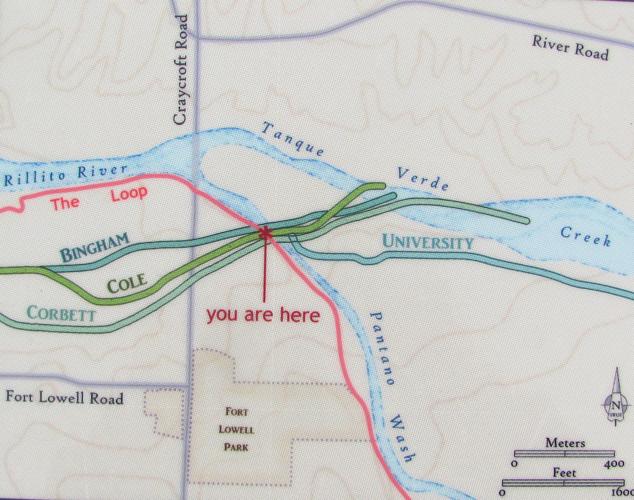A recently completed segment of the Pantano River Park Trail offers the same exercise opportunities as other parts of The Loop trail system. But it provides an added benefit as well: a short trail-side course on the amazing history of the area.
Information panels along the segment tracing Pantano Wash southeast of Craycroft Road tell of an ancient Hohokam village at the site, conflicts over irrigation channels, the rich history of nearby Fort Lowell and more.
HOHOKAM VILLAGE
A panel about the Hohokam village says: “The Hohokam Village, named the Hardy Site by archaeologists, was home to a community of artisans, traders and farmers who lived at the fertile confluence of the Tanque Verde Wash, the Pantano Wash and the Rillito River between about A.D. 500 and 1200.
“The Hohokam depended on the abundant water and native plant and animal resources that were available there.”
The panel, and another about the ancient village, goes into detail on food sources and the use of stone axes to chop down trees that were then fashioned into poles used in construction of homes.
WATER CONFLICTS
An information panel on “Canals and Conflict” tells of an era along Pantano Wash that might not be familiar to many Tucsonans.
“Underground rock formations force groundwater to the surface of the Narrows, where Tanque Verde Creek and Pantano Wash join the Rillito River,” the panel reads. “The plentiful water and fertile soil here attracted prehistoric Hohokam farmers. Beginning in the last half of the 1800s, it also drew Mexican-American settlers, European-American settlers, a U.S. Army regiment at Fort Lowell, and the Mormon enclave of Binghampton to the west.
“Surface water was a rare and precious resource in the Tucson Basin, and soon led to conflict over water rights in the Narrows — first between the families who settled here and the Army, and then among the men who owned shares of the four main irrigation ditches running from the Rillito to farm fields and reservoirs west of Pantano Wash.”
The narrative concludes: “Why so many squabbles? Tapping desert water sources quickly lowers the water table. By 1910, groundwater in the Narrows had fallen so far that building new ditches became impractical.”
MORE INFORMATION
Additional information panels along the Pantano Wash path offer a wealth of history and science on topics ranging from changes in the climate over thousands of years to details of life at historic Fort Lowell, in Fort Lowell Park just off the route of the path.
But if the short course along the path is fascinating, walkers and cyclists will also pass pleasing scenery along the route — from trees with leaves still showing autumn hues to winter-blooming wildflowers and expansive views of the Catalina Mountains.







